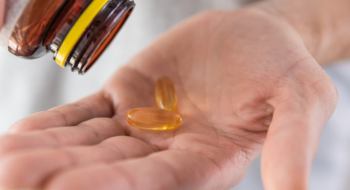Ever have one of those excruciatingly tight muscles, the kind that make you robotically move your whole upper body just to avoid turning your neck?
One therapy that’s gaining popularity in our region has proven effective at tackling the persistent spasms and knots that can be – quite literally – a pain in the neck (and elsewhere, too).
What is it?
In dry needling, a “dry” needle (without medication) is inserted through the skin and into the tight areas and knots of a muscle, called trigger points, says Kristin Dorio, a senior physical therapist who offers dry needling at Tidelands Health Rehabilitation Services at Murrells Inlet.
Trigger points are knots that contribute to pain and decrease muscle function and flexibility, and they can originate from poor posture or repetitive stress.
Inserting the tiny needle causes a reaction in the muscle that causes it to relax, Dorio says. The needle stimulates the body’s normal response to heal itself.
Dry needling treatment has been successful for patients with a wide variety of conditions including repetitive stress injuries, muscle tendonitis, neck pain, headaches, rotator cuff impingement, frozen shoulder, carpal tunnel syndrome, sacroiliac joint dysfunction, sciatica, muscle strains, iliotibial band syndrome, patella-femoral dysfunction and plantar fasciitis.
“Muscles can become incredibly tight and they might not be responding to massage or other manual treatment techniques,” she says. “But if we know that patient has trigger points, dry needling is a viable option that’s been around for a while and is gaining popularity in this area.”
In response to the trend, Tidelands Health recently expanded dry needling from two to seven locations throughout the region. The therapy is now offered at Tidelands Health Rehabilitation Services locations at North Myrtle Beach, Carolina Forest, Conway, Murrells Inlet, Myrtle Beach, Pawleys Island and Georgetown.
But isn’t that acupuncture?
So what’s the difference between dry needling and acupuncture?
While both dry needling and acupuncture use the same type of needles, the similarities end there, Dorio says.
Acupuncture is based on ancient Chinese holistic medicine, targeting “meridians” mapped out by philosophers looking to track the movement of “chi,” or energy, through the body.
Dry needling is clinical, and the treatment and goals are different because it targets the source of muscle-related pain: muscles.
Does it hurt?
“It can be uncomfortable,” Dorio says, “But many of our patients find that brief period of discomfort is better than the persistent pain and movement issues associated with the problem muscle.”
In a typical session, the physical therapist has evaluated the patient’s muscle function and the location of tight muscles that could be contributing to pain, she says.
“We look at their mobility and, for example, how they’re moving their neck,” she says. “The patient lies down and the new, sterile needles are inserted as we explain what we’re doing, step by step. Stimulating the muscle can cause a cramp or discomfort, but the patient, of course, can ask to stop at any time.”
But they might not want to. The process takes just minutes and the results are sometimes instant.
“They sit up, and we can see that their motion and mobility are instantly better,” Dorio says. “More therapists are using it and seeing excellent results.”
It might take more than one visit for problem muscles, but results are typically seen after one or two treatments on the same muscle.
Dry needling “opens the gate” and gets the muscle back to its normal resting length, Dorio says. Stretching, exercise and proper posture can prevent the muscle from reverting to its painful state.
“Dry needling can really improve quality of life and open a world of new activities for patients who’ve suffered from chronic pain that’s related to muscles,” Dorio says.





